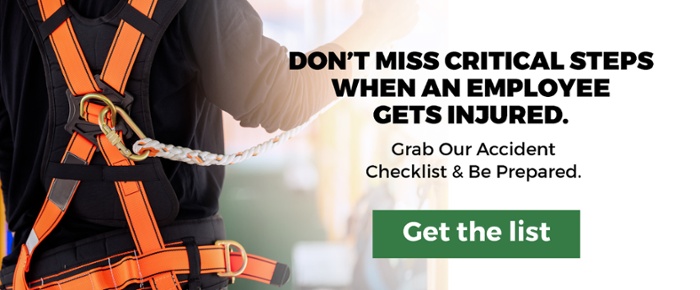When it comes to ensuring safety and compliance on construction sites, corrective action reports (CARs) play a crucial role. These documents are not just formalities but tools for improving safety, enhancing efficiency, and ensuring compliance with regulations. Here’s a comprehensive guide to writing effective CARs in the construction industry.
Understanding Corrective Action reports
Corrective Action Reports (CARs) are more than just paperwork; they're powerful tools for safeguarding your construction site. These reports are a formal record of safety concerns or regulation violations discovered during inspections.
They play a critical role in documenting the issue, outlining a plan for rectification, and ensuring accountability throughout the process. By effectively utilizing CARs, construction companies can proactively address problems, prevent future incidents, and foster a safety culture that prioritizes workers' well-being and ensures continued project success.
1. Identifying The Need For a CAR
Not every situation on a construction site necessitates a CAR. However, developing a keen eye for potential problems is crucial. The need for a CAR arises when safety protocols are breached, an accident occurs, or even a near-miss incident is identified. Being proactive is key here – addressing minor issues before they snowball into larger problems can prevent injuries, delays, and costly repercussions.
2. Detailed Description of the issue
Providing a clear and comprehensive picture of the identified problem is paramount when crafting a CAR. Strive for specifics – include details like the exact location, time of day, and environmental conditions when the issue was observed. Avoid vague generalities; instead, paint a precise picture using objective language. This meticulous description ensures everyone involved clearly understands the nature and severity of the problem being addressed in the CAR.
3. Root cause analysis
A crucial part of the CAR is identifying the root cause of the issue. This involves looking beyond the immediate problem and understanding the underlying factors. Was it due to inadequate training, poor communication, or a lack of proper equipment? Identifying the root cause is key to preventing future occurrences.
4. development of corrective actions
Once the issue and its root cause are established, the next step is developing a corrective action plan. These actions should be specific, achievable, and measurable. They might include additional training, equipment modifications, or changes in procedure. Ensure that the actions directly address the root cause of the issue.
5. assigning responsibility
Assign responsibility for each corrective action to specific individuals or teams for effective implementation. Clearly state who is responsible for what, and set reasonable deadlines for completion. This assignment of responsibility ensures accountability.
6. implementation and corrective actions
Implementing the corrective actions is a critical step. This may require coordination among various teams or departments and could involve training, equipment procurement, or process changes. Regular follow-up and monitoring are necessary to ensure the actions are carried out effectively.
7. documentation and follow-up
After implementing the corrective actions, document everything. This documentation should include actions taken, who was involved, and when they were completed. Following up to assess the effectiveness of these actions is also crucial. Are the solutions working? Is there a need for further action?
Related Content: How to Build a Construction Incident Report
8. Preventive measures
While corrective actions directly address the issue at hand, a crucial aspect of a CAR lies in preventing similar occurrences in the future. This proactive approach involves looking beyond the immediate problem and identifying potential solutions that can be implemented.
Consider revising existing safety protocols, enhancing training programs for workers, or investing in improved equipment or signage. By incorporating these preventive measures, construction companies can move from reactive problem-solving to a forward-thinking approach that prioritizes long-term safety and minimizes the risk of future incidents.
9. clarity and conciseness
When writing a CAR, clarity and conciseness are vital. The report should be easily understandable to everyone involved, from workers on the ground to management. Avoid technical jargon unless necessary, and ensure that the language is straightforward.
9. review and approval
Before finalizing the CAR, it should be reviewed and approved by relevant authorities within your organization. This could be a safety manager, site supervisor, or a compliance officer. The review process ensures that all aspects of the issue have been addressed and that the corrective actions are appropriate and feasible.
Conclusion
Effective corrective action reports are key to maintaining safety and compliance in the construction industry. They provide a structured way to identify issues, develop solutions, and prevent future occurrences. By following these steps, construction firms can ensure that their sites are not just compliant with safety regulations but are also proactive in fostering a culture of safety and continuous improvement.
Remember, the goal of a CAR is not just to fix a problem, but to enhance the overall safety and efficiency of your construction operations. With well-written CARs, construction firms can turn challenges into opportunities for growth and development.
business.


















